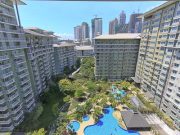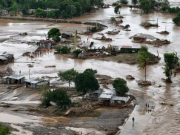I. Introduction
The rental market, a crucial component of the real estate industry, refers to the supply and demand for leased properties. In this market, property owners, also known as landlords, offer their properties for rent, while tenants pay to utilize these spaces for a specific period. Rental needs exist across residential, commercial, and industrial real estate, but our focus in this article is on the latter – residential properties.
The Philippines, an archipelago of more than 7,000 islands, is home to a vibrant and diverse residential rental market. The variety is vast, from high-rise condominiums in bustling cities like Manila and Cebu to single-family homes in quieter provinces. This diversity caters to an equally varied demographic, from young professionals seeking proximity to their workplaces to families preferring suburban tranquility to retirees enjoying coastal living.
Analyzing the rental market, particularly in the residential sector, is paramount for various reasons. Understanding the market dynamics can help investors identify lucrative opportunities and potential risks. For government entities, it can guide policy-making and urban planning. For tenants, it equips them with necessary knowledge about prices, laws, and trends, aiding them in making informed decisions.
This article delves deep into the rental market outlook of residential properties in the Philippines. We aim to provide a well-rounded view of the current state, driving factors, technological impacts, and future predictions of this market. We aim to offer valuable insights that benefit investors, tenants, and policymakers alike. Stay tuned as we navigate the intricacies of the Philippine residential rental market together.
II. The Current State of the Philippines’ Rental Market
A. Recent Trends and Developments
Over the past few years, the Philippine residential rental market has witnessed several notable trends and developments. Primarily, there has been a surge in demand for properties located in or near business districts such as Makati, Bonifacio Global City, and Ortigas Center. This trend is driven by young professionals and expatriates prioritizing accessibility to their workplaces.
Another significant trend is the increasing demand for fully furnished apartments and condominiums. With the rise of transient workers and the popularity of staycations, more people are seeking ready-to-move-in properties that offer convenience and comfort.
Moreover, the advent of digital platforms has revolutionized how landlords and tenants interact. Online real estate marketplaces have made property searching, viewing, and leasing easier and faster, catering to the lifestyle of the digital age population.
B. Key Players in the Market
Several key players dominate the Philippine residential rental market, including major real estate developers like Ayala Land, SM Prime Holdings, and Megaworld Corporation. These companies offer a wide range of residential properties, from luxury condos to affordable apartments, catering to different market segments.
Furthermore, online platforms such as HousingInteractive have emerged as essential players in the market. By connecting landlords and tenants, the media have significantly simplified the rental process, offering features like virtual tours, online booking, and secure payment options.
C. Impact of COVID-19 on the Rental Market
The COVID-19 pandemic has undeniably affected the Philippine residential rental market. During the lockdown periods, many tenants struggled with rent payments, particularly those in the leisure and tourism sectors, leading to increased vacancies and reduced rental rates.
However, the market is gradually recovering, thanks to government initiatives like rental relief programs and the gradual reopening of businesses. Moreover, the pandemic has accelerated the shift towards digital platforms, as safety concerns have made online transactions more appealing.
Despite the challenges, the Philippine residential rental market remains resilient. The ongoing urbanization, the growing middle class, and the rise of the digital economy continue to fuel demand for residential rentals. As the country navigates through the pandemic, these factors provide optimism for the market’s future.
III. Factors Influencing the Demand for Residential Properties
Understanding the multitude of factors influencing the demand for residential properties is crucial for any stakeholder in the rental market. These factors can be broadly categorized into economic, demographic, and governmental influences.
Economic Factors: Employment, Income Levels, Interest Rates
The state of the economy plays a significant role in shaping the demand for residential properties. Firstly, employment rates directly influence rental demand. When more people are employed, especially in urban areas, there’s an increased need for housing, thus driving up the rental market.
Income levels also play a pivotal role. As income levels rise, so does the capacity to afford higher rents or move into better-quality housing. This trend is evident in the Philippines, where the growing middle class drives demand for mid-range and upscale residential properties.
Interest rates are another key economic factor. Lower interest rates typically make home loans more affordable, which could potentially decrease rental demand as more people opt to buy homes instead. Conversely, when interest rates are high, more people might choose to rent rather than buy, increasing rental demand.
Demographic Factors: Population Growth, Urbanization
Demographic shifts significantly impact the residential rental market. Rapid population growth can increase demand for housing, particularly in urban areas. Population growth and urbanization in the Philippines have led to a surge in demand for city-based residential rentals.
Urbanization, in particular, has a profound impact. As more people move from rural to urban areas for work or education, the need for urban housing escalates. This phenomenon is prominent in Metro Manila, Cebu City, and Davao City, where the influx of migrants has driven up rental demand.
Government Policies and Regulations
Government policies and regulations also substantially affect the rental market. Policies promoting homeownership, such as affordable housing programs and low-interest home loans, might decrease rental demand. On the other hand, policies encouraging rental housing, like tax benefits for landlords or tenant protection laws, can stimulate rental market growth.
The government has implemented several policies in the Philippines affecting the rental market. For instance, the Rent Control Act of 2009 protects tenants from excessive rent increases, making renting a more appealing option for many Filipinos.
These economic, demographic, and governmental factors continually shape the demand landscape of the Philippine residential rental market. Understanding these dynamics is crucial for investors, tenants, and policymakers as they navigate the complex world of real estate rentals.
IV. Detailed Analysis of the Residential Property Demand
To gain a comprehensive understanding of the residential rental market in the Philippines, dissecting the demand for different types of properties and examining regional variations is essential.
Demand for Condominiums
Condominiums have become increasingly popular in the Philippines, particularly in urban areas. This surge in demand can be attributed to several factors. Firstly, condominiums are often located in prime city locations, offering easy access to workplaces, shopping centers, and other amenities. This convenience appeals to young professionals and families alike. Secondly, condominium living provides a sense of security and community, with facilities like 24-hour security, swimming pools, and gyms standard features.
Demand for Single-family Homes
Single-family homes remain a preferred choice for many Filipinos, especially those with families. These properties offer more space and privacy than condominiums, making them ideal for family living. In addition, single-family homes often come with outdoor spaces like gardens or yards, which many tenants highly value. The demand for single-family homes is robust in suburban areas and provinces outside Metro Manila.
Demand for Apartments
Apartments, especially budget-friendly ones, also have a steady demand in the Philippine rental market. They cater to many tenants, from students to young professionals to small families. Apartments are often seen as a practical choice, balancing affordability and convenience. In recent years, the demand for fully furnished apartments has increased, driven by the growing number of transient workers and the popularity of staycations.
Regional Differences in Demand
Regional differences significantly impact property demand in the Philippines. Metro Manila, the country’s business and educational hub, has a high demand for all residential rentals. In contrast, regions like CALABARZON and Central Luzon, known for their industrial zones, strongly need single-family homes and apartments.
On the other hand, regions with booming tourism industries, such as Central Visayas and Western Visayas, have a high demand for vacation rentals. In these areas, properties with unique features or access to tourist attractions are particularly sought after.
Understanding the nuances of property demand is crucial for navigating the Philippine residential rental market. Stakeholders can make informed decisions and capitalize on opportunities by keeping abreast of trends and regional differences.
V. The Impact of Technology on the Rental Market
Technology has dramatically transformed the real estate industry, and the rental market is no exception. Let’s delve into how these advancements shape the property rental landscape, from online platforms to digital payments and virtual tours.
Role of Online Platforms in Property Rental
Online platforms have significantly streamlined the property rental process. They offer a centralized location where landlords can list their properties, and potential tenants can search for available rentals based on their needs. This has made the process more efficient and expanded the potential market for landlords, as they can now reach a global audience.
For example, platforms like Airbnb have revolutionized the short-term rental market by providing an easy-to-use interface for homeowners to rent out their properties. These platforms also offer various tools and resources for hosts, such as pricing recommendations and analytics, making managing their listings easier.
Moreover, online platforms have also introduced a level of transparency previously needing to be improved in the rental market. They often include reviews from previous tenants, giving potential renters more information about the property and landlord before deciding.
Digital Payment Systems and Their Influence on Rental Transactions
The adoption of digital payment systems has also profoundly impacted rental transactions. Landlords and property managers can now accept rent payments online, making the process quicker and more convenient for both parties.
In addition, digital payment systems also provide a secure and traceable record of transactions, reducing the risk of payment disputes. Some platforms even offer automated payment features, ensuring landlords receive their rent on time.
Virtual Tours and Other Technological Advancements in Property Viewing
Technological advancements have also made the property viewing process more flexible and efficient. Virtual tours, for instance, allow potential tenants to explore properties from the comfort of their own homes. These immersive experiences provide a detailed view of the property, helping renters make informed decisions without physically visiting the site.
Other technologies, such as augmented reality (AR) and artificial intelligence (AI), are also incorporated into property viewing. AR can visualize potential renovations or furniture arrangements, while AI can provide personalized property recommendations based on a user’s preferences and behavior.
In conclusion, technology is increasingly important in the rental market. By embracing these advancements, landlords, property managers, and tenants can all benefit from a more efficient and transparent rental process. As technology evolves, we expect to see even more changes in how we rent properties.
VI. Future Outlook of the Philippines’ Rental Market
As we look towards the future, the Philippines’ rental market shows promising growth and resilience, underpinned by strong economic development and rapid urbanization. However, this dynamic market also poses potential challenges for stakeholders to navigate successfully.
Predicted Trends and Developments
The Philippines’ real estate sector is expected to finish 2023 on a high note, continuing its recovery from the impacts of the COVID-19 crisis. Several key trends are predicted to shape the future of the rental market:
- Urbanization
The country’s fast urbanization rate drives demand for residential rentals in city areas.
- Office Space Demand
With more companies encouraging employees to return to the office, the demand for office rentals will likely remain stable.
- Growth in Property Classifieds
The rise of online property classifieds makes it easier for landlords to reach potential tenants and is expected to support the rental market.
- Hybrid Reality
The future of work is set to impact real estate trends with the rise of hybrid working models, leading to an increased demand for flexible living spaces.
Potential Challenges and Opportunities
While the Philippines’ rental market outlook is generally positive, it’s not without potential challenges. Global headwinds, such as economic uncertainties and the ongoing pandemic, could impact the market’s recovery. However, these challenges also present opportunities for innovation and resilience.
For instance, the shift towards remote and flexible working presents an opportunity for landlords and property managers to offer rentals that cater to these new needs. Properties with home office spaces or proximity to coworking spaces may be beautiful to tenants in the future.
Strategies for Success in the Future Market
To succeed in the future rental market, stakeholders must stay abreast of market trends and adapt their strategies accordingly. This could involve leveraging technology to reach potential tenants, offering flexible rental terms, or investing in properties in areas with high urbanization rates, like Manila and Cebu.
Furthermore, with the predicted positive rental growth in 2023, landlords and property managers should be prepared to capitalize on this trend. This could involve reassessing rental prices, improving property features to command higher rents, or expanding their portfolio to exploit the growing demand.
In conclusion, while the future of the Philippines’ rental market holds potential challenges, it also offers abundant opportunities for those willing to adapt and innovate. Understanding the market trends and aligning strategies with these developments, stakeholders can position themselves for success in the future rental market.
VIII. Conclusion
The Philippines’ rental market is a dynamic and evolving landscape, shaped by many factors ranging from demographic shifts and urbanization to technological advancements and economic trends.
Our key findings indicate that the demand for different properties varies significantly, with condominiums being popular in urban areas while single-family homes are preferred in suburban areas. The need for apartments, particularly budget-friendly, remains steady across the country.
Technology has profoundly impacted the rental market, making the property rental process more efficient and transparent. Online platforms have expanded the potential market for landlords, digital payment systems have streamlined rental transactions and virtual tours have made property viewing more flexible and efficient.
The rental market in the Philippines shows promising signs of growth and resilience. Predicted trends include continued urbanization, stable demand for office rentals, change in online property classifieds, and increased flexible living spaces due to the rise of hybrid working models. However, the market’s recovery could impact potential challenges such as global economic uncertainties and the ongoing pandemic.
Implications for Investors, Tenants, and Policy Makers
For investors, these findings suggest several strategies for success in the future rental market. These include leveraging technology, offering flexible rental terms, and investing in properties in areas with high urbanization rates. With the predicted positive rental growth, there is also the opportunity to reassess rental prices and improve property features to command higher rents.
For tenants, the evolving rental market offers more options and flexibility. The rise of online platforms and virtual tours makes it easier to find and view properties, while the shift towards flexible living spaces caters to the changing needs of the workforce.
For policymakers, these findings highlight the importance of supporting the growth and resilience of the rental market. This could involve policies that encourage investment in the real estate sector. These regulations protect the rights and interests of landlords and tenants and initiatives that promote the use of technology in property rental.
As demonstrated, the Philippines’ rental market offers abundant opportunities for those willing to adapt and innovate. By understanding the market trends and aligning strategies with these developments, stakeholders can position themselves for success in this dynamic landscape.

























